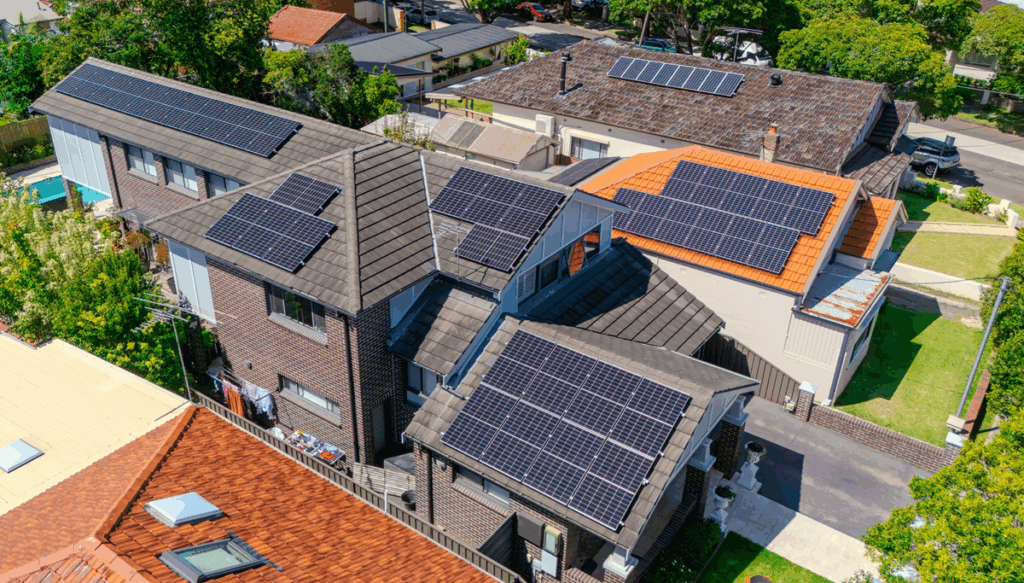
Australia is experiencing a significant shift in its energy landscape as it leads the world in rooftop solar adoption. By June 2025, the country is projected to have installed approximately 4.2 million rooftop solar systems, resulting in a remarkable 26.8 gigawatts of clean power generation capacity. While this increase in solar power is crucial for reducing carbon emissions, it also presents new challenges for electricity grid operators.
The transition from fossil fuel-based generation to renewable sources has created what Dr. Julio Braslavsky, Senior Principal Research Scientist at the Commonwealth Scientific and Industrial Research Organisation (CSIRO), describes as “tidal” swings in power flows. During the day, a significant portion of homes—up to 40%—generate their own electricity through rooftop solar panels. This scenario contrasts sharply with the evening hours when power consumption typically relies on larger generation plants such as wind farms, hydroelectric stations, and fossil fuel facilities.
Dr. Braslavsky explains, “Let’s call this the ‘low-tide’ time in local electricity grid operation.” Conversely, when solar energy production exceeds local consumption, excess power is exported back to the grid, marking the “high-tide” phase. In South Australia, during peak solar production times, demand can be met entirely by rooftop solar generation.
Despite these advancements, the electricity grid faces limitations due to a phenomenon known as phase imbalance. This issue arises when different homes connected to the grid consume and generate electricity unevenly, leading to inefficiencies and potential safety risks. Dr. Braslavsky likens it to a three-lane highway where one lane is congested while the others are underutilized.
To address these challenges, CSIRO has partnered with X, the innovation lab previously known as Google X, on a project named Tapestry. Launched in 2023, the initiative explores the deployment of smart inverter technology to help balance power flows in real time. Smart inverters not only convert direct current (DC) from solar panels into alternating current (AC) for use in homes and on the grid, but they also manage electricity distribution effectively.
“Stemming from the foundational collaboration with X, CSIRO moved to developing and testing innovative designs of smart grid inverters that can tackle phase imbalance in real time,” Dr. Braslavsky stated. This development is particularly significant as it extends beyond Australia’s borders.
In October 2024, CSIRO showcased its smart inverter technology to Southeast Asian energy leaders, including representatives from Indonesia’s state-owned utility PLN. Indonesia grapples with similar challenges related to phase imbalance, resulting in inefficiencies and safety concerns within its local distribution networks. PLN expressed interest in collaborating with CSIRO to develop and test a prototype inverter that could enhance rooftop solar capacity and other consumer energy resources.
“Through its development initiatives in Southeast Asia, Australia’s Department of Foreign Affairs and Trade is funding a CSIRO-PLN partnership aimed at demonstrating how smart inverters can reduce congestion, improve infrastructure efficiency, and support electricity decarbonization,” Dr. Braslavsky noted.
The joint project will involve designing and testing a solid-state inverter capable of dynamically rebalancing electricity flows. The teams will simulate performance using real-world data from both Indonesian and Australian networks. Additionally, workshops and lab visits will facilitate knowledge sharing and technology refinement, with field trials planned to validate the inverter in live network conditions.
To ensure that the smart inverters operate effectively, researchers are developing detailed computer models that simulate real-world scenarios, including responses to fluctuating solar generation and sudden demand changes. Preliminary results indicate that simplified inverter architectures could significantly reduce phase imbalance by supplying corrective currents, potentially offering cost-effective solutions for widespread deployment across the grid.
CSIRO has already completed low-power lab tests and is preparing for high-power trials at its Energy Centre in Newcastle. The next phase includes real-time hardware-in-the-loop testing using Indonesian network scenarios, followed by the production of a joint technical report and possible field demonstrations.
If successful, this innovation could facilitate the integration of more rooftop solar into both the Australian and Indonesian electricity grids without compromising reliability. By 2050, Australia’s rooftop solar capacity is expected to reach 72 gigawatts, with nearly 80% of detached homes in the National Electricity Market (NEM) equipped with solar panels. The development of smart inverters will be essential in achieving this ambitious future.






